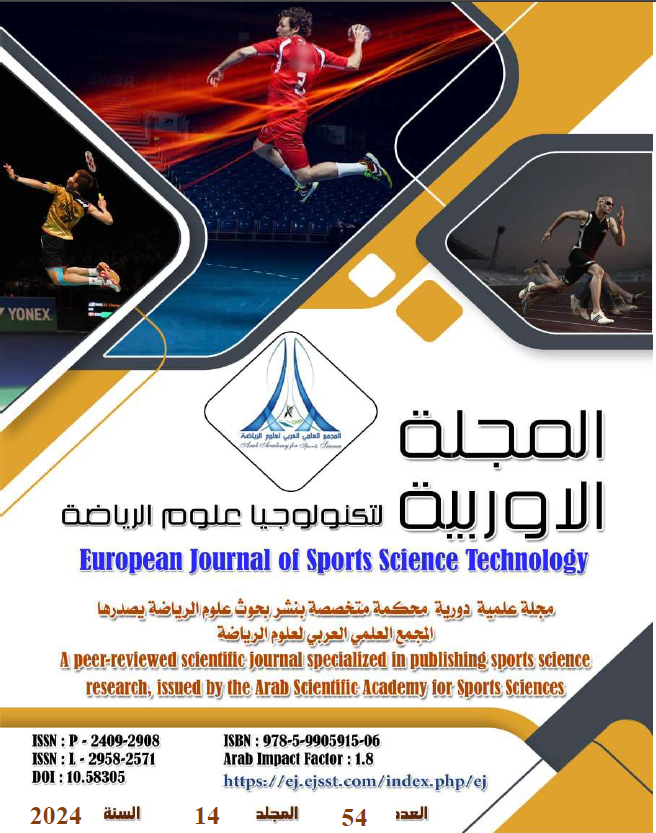The effect of using rubber resistance ropes on the level of cardiac output and achievement of 200 m freestyle
DOI:
https://doi.org/10.58305/ejsst.v14i54.522Keywords:
rubber ropes, cardiac output, 200m freestyle swimmingAbstract
The research aimed to know the effect of using rubber resistance and assistance ropes as a tool to increase water resistance in the flow of the body forward and the extent of its effect on the level of cardiac output and achievement in the 200 m freestyle swimming event. In order to achieve the goal of the research, the researcher selected (10) swimmers aged (14-16) years in a random manner, and they were divided into two groups, the first experimental (5) swimmers as an experimental group, and the second (5) swimmers as a control group. Both groups implemented the sections of the training curriculum prepared by their trainer in all its details, except that the experimental group used rubber ropes as a resistance and assistance tool (pulling) inside the water within the capacity training and overloading within the vocabulary of the daily training unit, and the control group used the traditional training curriculum according to the method prepared by the trainer. The researcher conducted the test before and after the research period, which lasted for 12 weeks, at a rate of three training units per week, and the results achieved were statistically analyzed for both groups, where the researcher found that the 200m swimming time had developed in both groups, except that the group that used rubber ropes inside the pool in capacity development training was the best, in addition to the improvement in cardiac output, which is an indicator of rapid recovery.










